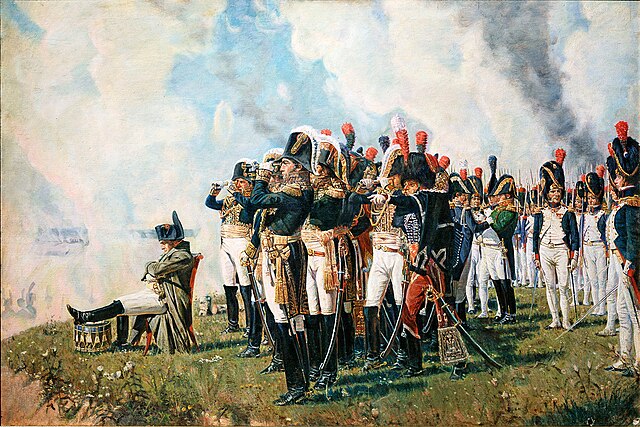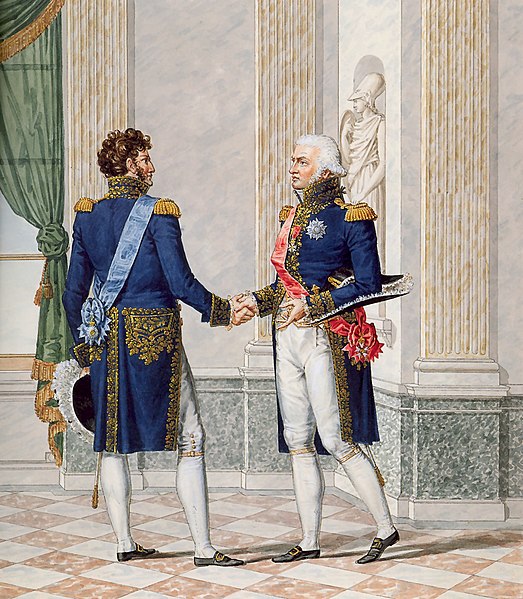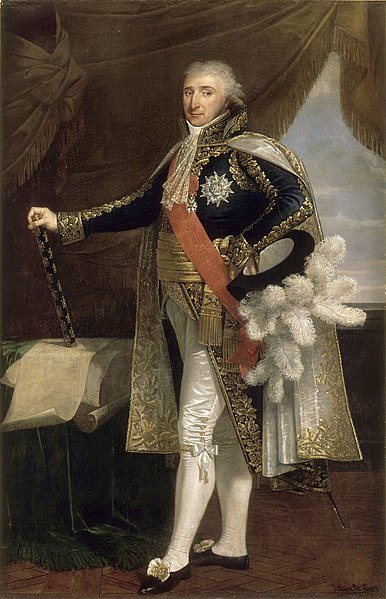François Christophe de Kellermann
François-Étienne-Christophe Kellermann or de Kellermann, 1st Duke of Valmy was a French military commander, later the Général d'Armée, a Marshal of the Empire and freemason. Marshal Kellermann served in varying roles throughout the entirety of two epochal conflicts, the French Revolutionary Wars and the Napoleonic Wars. Kellermann is one of the names inscribed under the Arc de Triomphe, on Column 3.
Kellermann as Marshal of the Empire, after a contemporary portrait by Antoine Ansiaux
Heraldic achievement of Kellermann as Duke of Valmy
Kellermann's tomb in Père Lachaise Cemetery
Marshal of the Empire was a civil dignity during the First French Empire. It was created by Sénatus-consulte on 18 May 1804 and to a large extent reinstated the formerly abolished title of Marshal of France. According to the Sénatus-consulte, a Marshal was a grand officer of the Empire, entitled to a high-standing position at the court and to the presidency of an electoral college.
Napoleon and several of his Marshals (recognisable by their white-feathered bicornes) at the Battle of Borodino in 1812. Painting by Vasily Vereshchagin
Official uniform of a Marshal of the Empire. It was designed by painter Jean-Baptiste Isabey and designer Charles Percier.
Image: Robert Lefevre 20
Image: Jean Baptiste Jules Bernadotte, Prince de Ponte Corvo, roi de Suède, Maréchal de France (1763 1844)







